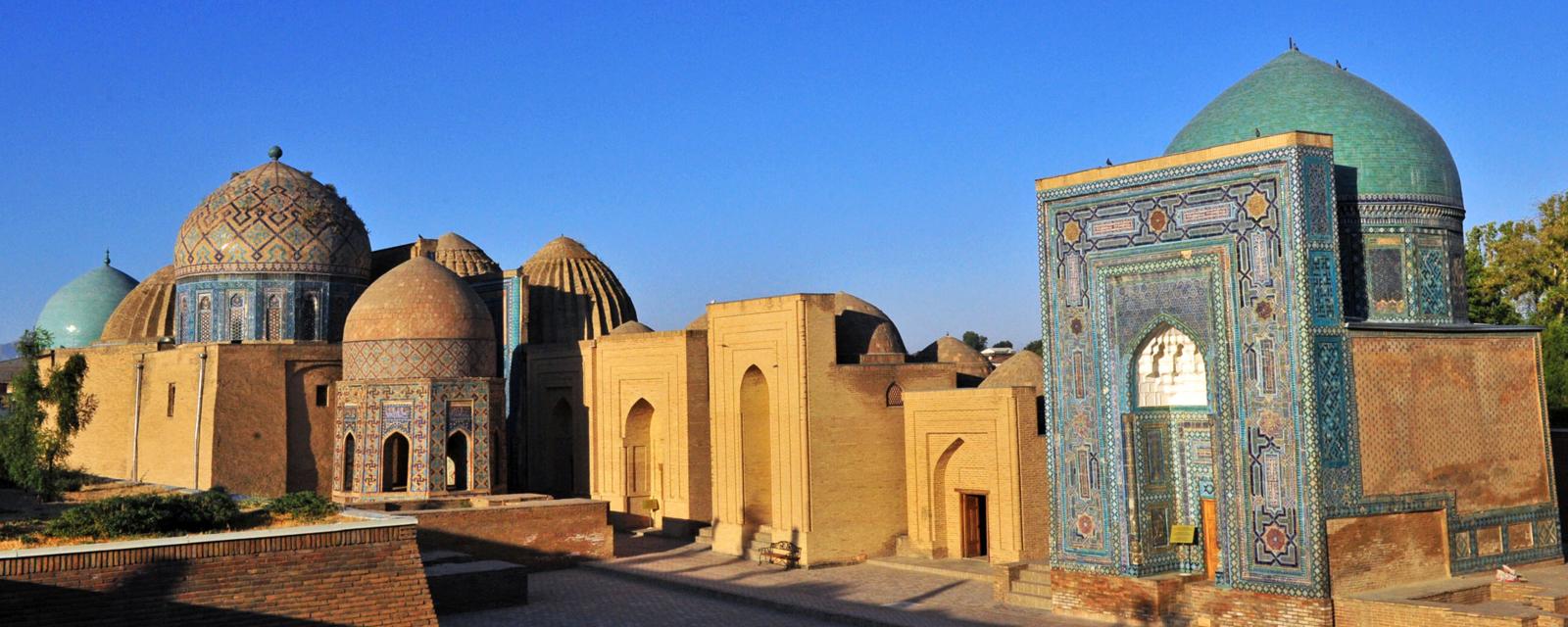Capital of a Global EmpireTamerlane was once one of the world’s most feared conquerors and kings. In the course of amassing his Eurasian empire in the late 14th Century, experts say he killed some 5% of the Earth’s population.
But his legacy left behind some beauty as well, and today, 25 years into its independence, Uzbekistan has made the controversial ruler its greatest national hero by restoring many of the structures that he built.
Samarkand, the desert city that was the capital of Tamerlane’s global empire, is both imperial and exotic, full of palaces and mosques, madrasas and mausoleums, soaring minarets and massive domes, all of them appointed with ornate blue tiles and hundreds of years of history. Pictured here is the Shah-i-Zinda necropolis, which was built between the 11th and 19th Centuries. It houses the graves of Tamerlane’s relatives and, according to legend, the cousin of the prophet Mohammed. (Credit: Jill Potter)
Massive mosquesBuilt on a staggering scale, Samarkand’s mosques and other historic buildings tower over the modern city and its denizens. For example, the Bibi Khanum mosque (pictured), which Tamerlane built after his campaign in India at the close of the 14th Century, originally featured as many as 450 marble columns and was constructed with the help of almost 100 elephants. (Credit: Tim Johnson)
Heart of an empireEven though Tamerlane – or Timur as he’s usually known in Uzbekistan – established an empire that stretched from present day India to Turkey, and Russia to Saudi Arabia, the heart of his dominion was the Registan (or "sandy place” in Persian) in Samarkand. This square was once home to royal proclamations – and public executions; today it hosts major events, including music festivals. (Credit: Jill Potter)
A city of domesSamarkand is a city of domes, some of which are more beautiful when viewed from the inside. Spread across its skyline, these domes are soaring testaments to Tamerlane’s architectural legacy, which helped the city become a Unesco World Heritage Site. Pictured here is the inside of the Tilla Kari (or "gold covered”) mosque, a part of the Registan complex. (Credit: Jill Potter)
Science and literatureMirzo Ulugbek, Tamerlane’s grandson and the third ruler in the empire, was a mathematician and a poet – and a much better intellectual than leader. He was dethroned when his son ordered his beheading and took control of his kingdom.
Ulugbek’s legacy is best seen in the remains of the Ulugbek Observatory (pictured right), which he built in 1428. The city government is pouring billions of soms from the national treasury into restoring Samarkand’s historic sites, including the observatory’s entrance. Then after each restoration, the bulk of the maintenance work falls to a small army of local women, who sweep and mop with great vigour. (Credit: Tim Johnson)
Tomb of a kingA conqueror who took more lives than most, Tamerlane himself died in 1405. He’s buried in the magnificent Gur-Emir Mausoleum.
Like the man himself, his final resting place is both awe-inspiring and an example of excess: the mausoleum includes loads of gold and one of the largest pieces of jade on Earth. (Credit: Tim Johnson)
(BBC)







www.ann.az
Follow us !











